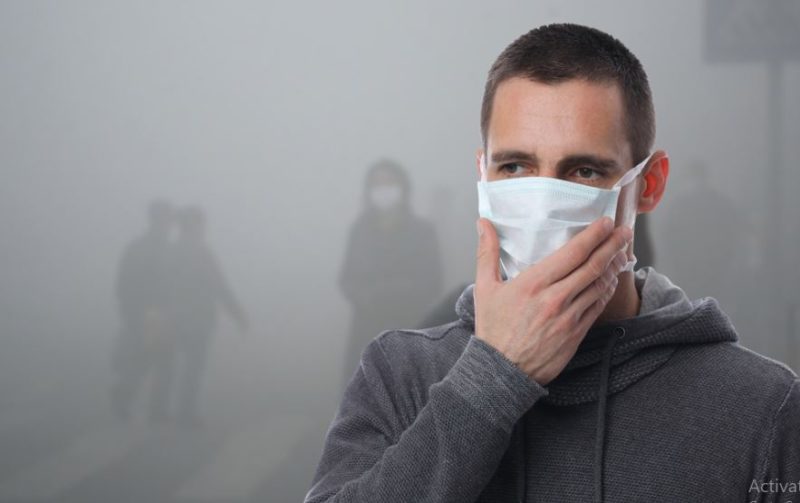Colder Winter Due to La Nina, Stubble Burning to Worsen Air Quality in North India
 Essential Winter Wear
Essential Winter Wear
Chilly winters, courtesy of La Nina, and peak stubble burning are set to worsen air quality in North India, reports a briefing combined by Climate Trends. As La Nina, i.e. cooler than normal sea-surface temperatures in the central and eastern tropical Pacific ocean that impact global weather patterns, makes an appearance for the second time in a row, meteorologists expect an intense winter, with North India likely to suffer through prolonged spells of pollution over the coming months.
While a lower number of crop residue burning incidents and widespread rain and snow in October kept pollution under check in the region until recently, the situation is already changing. With temperature dropping — and other meteorological factors like wind speed slowing down, wind direction, haze setting in — pollution levels are again in the ‘very poor’ and ‘hazardous’ categories in most cities across the Indo-Gangetic plains (IGP).
The seasonal factors of firecrackers and stubble burning have, as usual, added to the problem, as the peak of crop residue burning incidents coincide with Diwali, adds Climate Trends.
Extended relation between La Nina and Air Pollution
Meteorologists have been forecasting record low temperatures across IGP this year, with November and December expected to be colder than usual. According to a recent report by Bloomberg, temperatures in India are expected to fall to as low as 3 degrees Celsius (37 Fahrenheit) in some northern areas in January and February before recovering.
Further, wintertime is quite conducive for pollution and a further drop in mercury would worsen the situation. Chilly days could trap the plains in the vicious smog circle, which means consecutive days of bad air quality would persist. Prof S N Tripathi, Head of Department, Civil Engineering, IIT Kanpur, explained that the particulate matter changes its property after coming in contact with fog, paving way for more fog.
Extra caution needed this season, reducing emissions the only way
Scientists have emphasised the need to practice extra caution this season: “We have no control over meteorological conditions, but we can control emissions,” says Dr. Sagnik Dey, Associate Professor, Centre for Atmospheric Sciences, IIT Delhi.
“December and January are the core winter months and we do not expect stubble burning during that time. With record low temperatures likely, we are not left with any other option but to reduce emissions. Otherwise all clubbed together would multiply the impact and pollution would intensify manifolds,” Day explains.
Delayed stubble burning peak and drop in mercury to worsen air pollution in Delhi-NCR
Delhi-NCR is inching towards some worse air quality days. On and off rains during October had pushed the peak season of stubble burning and the month recorded much fewer farm fire cases than 2020. Data from the ICAR – Indian Agricultural Research Institute shows that total crop residue burning events recorded in the six states this year are 54.8% less than in the same period in 2020.
As a result, most of the cities in the six states reported lower concentration of PM 2.5 in September and October 2021 as compared to last year. However, biomass burning has started picking up pace now. There has been a significant increase in the crop residue burning incidents, especially in northwestern plains. Recent data suggests that Haryana has already surpassed the cases registered last year, followed by Uttar Pradesh which is catching up fast with the count in 2020. Experts are expecting the next two weeks to be crucial for Delhi’s air quality as stubble burning is likely to peak across IGP.
Monsoon 2021 had an extended stay in the country, and started retreating only after October 6, which was 20 days later than the normal date of commencement of withdrawal of Monsoon. Presence of monsoon till October 24 across the northwestern plains pushed the stubble burning season as well as polluted days ahead to November.
Now as we enter November, the combination of drop in mercury and reducing wind speed in the coming days is likely to put Delhi-NCR in a tight spot. “Had the peak of stubble burning been witnessed in October, the impact would have been less over Delhi-NCR. Neither the wind speed would have been slow nor the temperatures were so down. However, November is a changeover month from spring to winters, wherein we would see a drop in temperatures as well as wind speed. This coupled with early arrival of winters seems to set up a stage for unhealthy air quality days for the national capital,” said Mahesh Palawat,
VP,Meteorology and Climate Change, Skymet Weather.
Experts at Council on Energy, Environment and Water (CEEW) state, “Earlier this season, daily fire counts reported in Punjab and Haryana were less than 1000. But in the last four days, more than 2000 fires per day were reported in Punjab and Haryana combined. As we are in the peak burning window, fires are likely to rise as high as 3000-4000 fires per day in the coming days,” signalling the impending arrival of a difficult time for most of North India.




